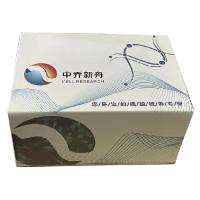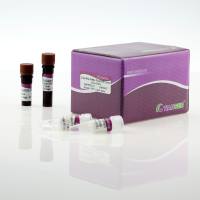Mutagenesis by PCR
互联网
Mutagenesis by PCR(adapted from Ito et al , Gene 102, 67-70)
This method needs only a single mutagenic primer (+ 3 other primers which are the same for all constructs if used in the same vector) and would be a cheap and reliable method if lots of mutants need to be made.
1) Design oligo - the forward and reverse primer can be bought ready-made (but may be cheaper to synthesise it), they prime to regions in front of and behind the cloning region (e.g. T7 promoter primer and T7 terminator primer). Only the mutagenic primer and knock-out primer need to be designed. Make sure that there is perfect complementary of ~15 bases on either sides of the mutagenic site. The knock-out primer remove one or more convenient restriction sites which will be used to select for mutated strands (the restriction site of the mutated strand is not knocked-out and can therefore be digested and ligated).
 |
oligo I - Forward primer oligo II - Reverse primer oligo III - Mutagenic primer oligo IV - RE knockout primer |
2) 1st PCR step - in 2 separate tubes, perform a PCR using the following set of oligos:
- oligos I and IV
- oligos II and III
4) Purify and digest the PCR product with the appropriate restriction enzymes (i.e one RE that target the knock-out site and one situated before the gene sequence), then gel purify and ligate the PCR product into vector.
note:
1) It is useful to gel-purify the PCR products after the first PCR step. This is to remove the template DNA so that the second PCR step cannot PCR up any remaining template DNA. Adding just this simple step can significantly improve the effficiency of the mutagenesis.
2) Do not do too many cycles in the second step.
3) It may not be necessary to purify the DNA after the second PCR before the digest. Some restriction enzymes work well in the PCR buffer. However, you must gel-purify the digested DNA.
4) For the second PCR step, you can start the PCR without the oligo I and II, then add the oligos after a few cycles.
5) Do not use Vent polymerase for mutagenesis work.









